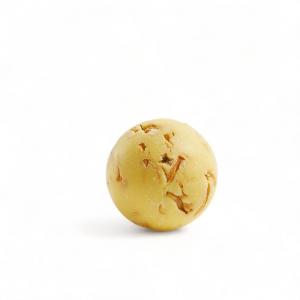
Diastasis and Proper Core Strengthening

What is Diastasis?
Diastasis, also known as the separation of the rectus abdominis muscles, is a condition where the left and right rectus abdominis muscles separate due to the weakening of the connective tissue that holds them together. This condition most commonly occurs in women after pregnancy, as the pressure on the abdominal wall increases to accommodate the expanding uterus. However, diastasis is not exclusively a female issue; it can also affect men or individuals of various ages, often due to improper stress on the abdominal area or excessive physical effort.
The manifestation of diastasis can often be seen as a bulging abdomen when the abdominal muscles are tense, for instance, during a slight back bend or when performing exercises targeting the abdomen. This "bulge" is caused by weak tissue that cannot keep the abdominal muscles together. If left unaddressed, diastasis can worsen and require more intensive rehabilitation.
Try our natural products
Why is Diastasis a Problem?
Diastasis is not only an aesthetic issue but primarily a health concern. The separation of the abdominal muscles weakens the stability and functionality of the body's core, which is crucial for spinal support and overall posture. The breakdown of this solid structure leads to weakened muscle support for the spine, which can cause back pain and gradually lead to other issues associated with the spine and pelvic alignment.
Besides back pain, untreated diastasis can affect the proper functioning of organs in the abdominal cavity, as it weakens the ability of the abdomen to provide firm support to these organs. For example, people with diastasis may experience problems with digestion or the pelvic floor. There is also the risk of hernia formation, where organs can protrude through the weakened tissue out of the abdominal cavity. For these reasons, it is crucial not to underestimate diastasis and to address it promptly.
Try our natural products
What Causes Diastasis?
The separation of abdominal muscles can occur due to several different factors. In women, the most common cause is pregnancy. As the uterus grows, it pushes on the abdominal muscles and connective tissue, causing muscle separation. After childbirth, the abdominal area often remains weakened, and the connective tissue requires special care to gradually return to its original form.
Diastasis also occurs in men, most often due to improper exercise or excessive strain on the abdominal muscles. Genetics can also play a significant role, with some people naturally having weaker connective tissue. Rapid weight gain or excessive abdominal fat can also contribute to the development of diastasis, as it increases pressure on the abdominal wall.
Try our natural products
How to Get Rid of Diastasis?
Treating diastasis requires a careful and systematic approach, as incorrect exercise can worsen the condition. Recommended exercises focus on strengthening the deep abdominal muscles and core stabilizing muscles to reinforce the connective tissue between the rectus abdominis muscles. Effective methods include exercises like "core stabilization," which helps restore the functionality and strength of deep muscles, including the diaphragm and pelvic floor muscles.
A highly effective way to begin addressing diastasis is through breathing exercises, which strengthen the deep abdominal muscles without dangerous overexertion. Gradually, exercises like "pelvic tilts," "bridges," or light resistance training can be added, but it is crucial to maintain proper technique and consult the process with a physiotherapist. A physiotherapist can also recommend an individual treatment plan and assist with the correct execution of exercises.
Try our natural products
Why is it Important to Treat Diastasis?
Diastasis affects not only the aesthetics of the abdominal area but mainly the health and functionality of the body's core. With the right approach and exercises, it is possible to achieve improved abdominal wall strength, leading to better body stability and proper posture. Strengthening the abdominal muscles also reduces the risk of back pain and spinal problems, as the body’s core plays a crucial role in everyday movements and provides support for the entire trunk.
Treating diastasis can have a positive impact on self-confidence and the internal sense of stability, which is important both in everyday life and during sports activities. If the condition is neglected, the separation can worsen, making treatment more difficult and increasing the risk of complications such as hernia. Therefore, it is important to seek expert help promptly and begin safe and effective core strengthening.





















